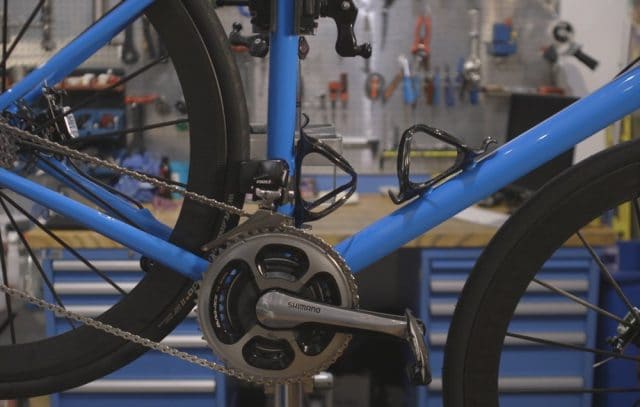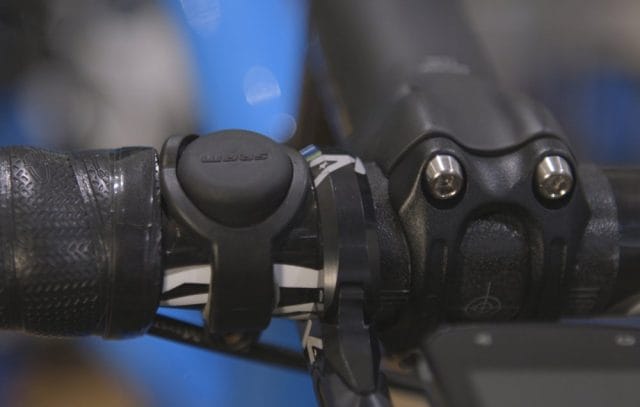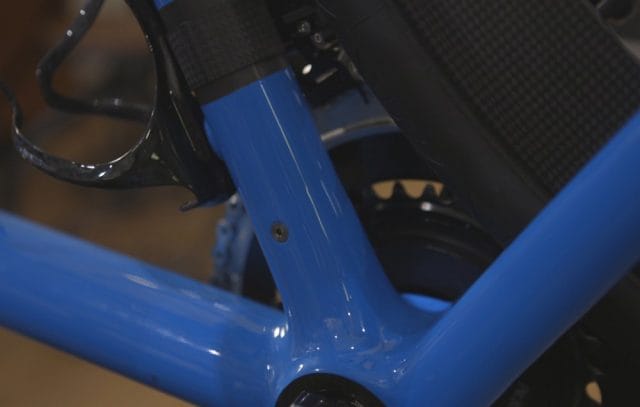This Is What it’s Like to Ride a Bike with a Hidden Motor
Over the past few years, e-bikes have exploded in popularity—they’re quickly gaining market share with commuters, cargo bike riders, and mountain bikers. But there’s one subset of e-bikes that is a bit lesser-known: Those that look almost exactly like regular, non-electric models.
 These bikes have motors that are tucked away in the frames of traditional road bikes, with batteries hidden in seat packs or water bottles. They’re in the news lately, thanks to accusations of “motor doping” in the pro ranks, but they’re easily available to the masses as well. There are two main brands that offer kits to consumers: Typhoon and Vivax.We took a trip to Greenwich, CT, to visit Signature Cycles, the US distributor of the Vivax Assist brand of hidden motors. We got a first-hand look at the system and how it’s installed, and we were able to take a short test ride on a bike equipped with it.
These bikes have motors that are tucked away in the frames of traditional road bikes, with batteries hidden in seat packs or water bottles. They’re in the news lately, thanks to accusations of “motor doping” in the pro ranks, but they’re easily available to the masses as well. There are two main brands that offer kits to consumers: Typhoon and Vivax.We took a trip to Greenwich, CT, to visit Signature Cycles, the US distributor of the Vivax Assist brand of hidden motors. We got a first-hand look at the system and how it’s installed, and we were able to take a short test ride on a bike equipped with it.
Signature’s owner Paul Levine and head mechanic Justin Bagnati walked us through the particulars of the system and dispelled some of the mystique surrounding the Vivax and similar systems.
How it Works
The Vivax motor needs to be housed in a frame that’s built specifically to accommodate added stress from the motor and to integrate the wires and battery. Signature currently works with Seven Cycles and Parlee for frames able to accept the motor, and Vivax itself also offers frames.
Once installed, the Vivax is pretty impressive: It’s small, quiet (but not soundless), and lightweight. The motor is a 200-watt output unit that delivers a claimed 100- to 110-watt boost to the drivetrain. Run time is a claimed 90 minutes with the stock battery, though there are smaller batteries available that offer the same wattage boost over a shorter duration. The motor has a bevel gear that mates to a corresponding gear held to the spindle of a 24mm crankset with a pressed collet. (Currently it works best with Shimano Hollowtech cranks and can be made to work with FSA. According to Bagnati, SRAM cranks are a no-go because of the stepped spindle.) On the bike we tested, the battery was rather large and housed in a saddlebag. The system comes stock with a bullet-shaped trigger that is about 1.5 inches long, but on this model, a cleaner-looking SRAM e-Tap “Blip” shifter located on the handlebar triggered the motor.

Bagnati says that adapting a bike to the Vivax system isn’t as simple as purchasing the motor and slipping it into the seat tube. The frame you’re using needs to have an internal diameter of 31.6 straight through the seat tube’s length. Two small holes located at a precise distance just above the bottom bracket allow the motor to be pinned in place. The gear on the crank spindle requires a bottom bracket with threaded English cups that have been machined out on the inside to pass over the collet and drive ring. The whole system adds about 1.8kg to the overall weight of the bike—a weight somewhere in the neighborhood two full water bottles.
Who’s Interested
Levine says that the Vivax system is the same type that could be used to cheat in the pro peloton, but when asked about his own clientele, he describes a much different rider: those who need just a bit of a boost to get over the climbs or some extra oomph to stay with a group. Of course, that doesn’t come cheap: The Vivax system is about R47,000 est. on its own; add a custom frame, premium build, and all of a sudden you’re in the R160, 000+ price range just to start. Levine says his Vivax customers are generally well-heeled and slightly older. They are interested in multi-day trips in the Alps, guided tours with groups, and maintaining the speed they are accustomed to from years of riding but perhaps no longer able to sustain. They’re also particular about the aesthetics of their bikes and praise the system’s ability to be out of sight on what appears to be a standard road bike. Other benefits are the ability to only use the motor when you need that extra kick, and the low weight. That weight renders the bike light enough to use even without the motor engaged.
How it Feels
I got to ride the bike for about 45 minutes on rolling hills just outside Greenwich. It was an excellent place to get acquainted with the system and how it dovetails with your riding.
First, a word about setup: The Vivax should be set for the rate you are pedaling to provide the best experience. If you spin at 90rpm, you will get the most benefit from the Vivax by having it set to that speed. Conversely, if you are someone who turns the cranks at a lower rate (70rpm for example), you can set the motor to that speed for the best power output. It can also be adjusted while riding if the terrain you are on is changing—say, from the flats to sustained climbing. By holding down the trigger for five seconds, the motor will reset to the cadence you’re currently riding. Ideally, the motor should be toggled off by pressing the trigger before you stop pedaling. If you don’t, it will automatically kick out of assist mode almost instantaneously and you’ll be under your own power—but not before it delivers a small kick, much like the one you get when mistakenly trying to coast on a fixed gear bike. That sensation was more pronounced at lower speeds than high when I tried it during the ride.
The first thing I noticed while riding was the sound of the motor. It’s quiet enough that with traffic noise or in the midst of a pack or a crowd it would be almost undetectable. But riding two-up on a quiet road, it’s noticeable. I also quickly learned that there is a sweet spot to the motor and that riding more than about 10 rpm above or below the set cadence resulted in either a whine as you over-drove the motor, or a heavy drone as you lugged it and the motor slowed down below where it wanted to be. People familiar with driving a stick shift automobile will readily understand what I’m talking about.

Once you hit the button to trigger the motor the extra power is noticeable. It’s not the huge boost of a regular e-bike; it’s more the feeling of having a really good, heavy tailwind. You’re still working—there is no getting around that fact—but even getting up the steepest hills we rode (about 22 percent for 1.6km), I still felt like I wasn’t digging as deep as I would need to when unassisted. Prior to riding, I had also wondered whether there would be drag on the drivetrain when the motor was disengaged; there wasn’t when driving the cranks forward, though when backpedaling, you could hear the motor whine just a tiny bit and feel some resistance. It wasn’t enough to “droop” the chain or cause a dead spot in your pedal stroke when you started pedaling forward again, and so it wouldn’t upset your riding when you are setting up for a corner or leveling your cranks.
The power comes on seamlessly; at the touch of the bar-mounted button, there’s that tailwind feeling. You can use the noise of the motor to match your cadence to it. After just a few minutes of riding, I was attuned to it well enough to use the sound to help me know when to turn the motor off, reset the cadence to a different setting, or guide my personal spin back in sync with what the motor was set at.
I came away impressed. The Vivax is a well-refined system that delivered on its promise of seamlessly incorporating a small motor to an otherwise normal bike. It’s simple to operate, doesn’t add much weight to a bike, and seems to be well made. Its price may put it out of reach of most mortal riders, but for those that can afford it, it’s pretty neat.

